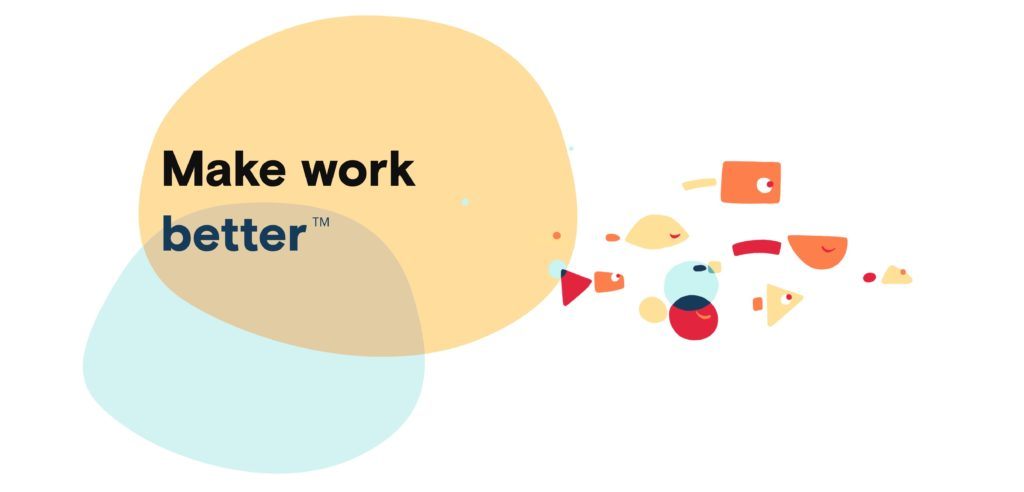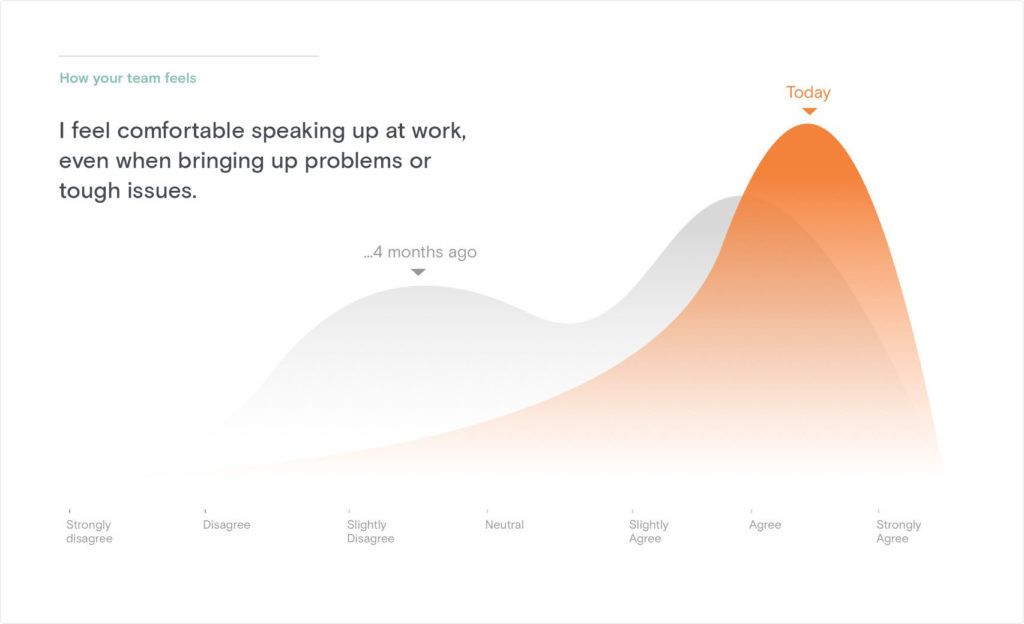Can ML replace Human Resources?

With $40 million dollars in venture backing and over 20% of Fortune 100 companies asking to use their product, will Humu, an enterprise relationship management system, make a lasting impact in the move to bring technology into HR functions?
An opportunity gap
Machine learning is infiltrating almost every enterprise. Studies have found that 51% of enterprises consider themselves to be sophisticated or early adopters of machine learning, with the remaining 49% exploring machine learning opportunities [1]. Companies have gained immense benefits from machine learning because the system adapts and refines its accuracy over time. For example, Salesforce built a customer relationship management (CRM) system that features “predictive lead scoring,” enabling a salesperson to identify customers that have higher potential with less effort than previously required [2]. This application is unique in that it can be used within Salesforce to gain more customers, but also sold externally to companies needing a CRM system.
This duality, of not only building a system for yourself, but also selling it to others was a foundation the foundation for Humu, an enterprise relationship management (ERM) system that focuses on leveraging the power of machine learning and behavioral economics to create more meaningful relationships within a company [3]. This product is coming at a excellent time. According to senior partners at the Boston Consulting Group, “HR’s traditional role and identity as a function and cost center should be transformed” [4]. CHROs are redefining their departments by bringing in technology to help serve the overall company.
Humu
Humu differentiates themselves from a traditional enterprise system in their approach and outcomes. While traditional enterprises run yearly satisfaction surveys to their employees, Humu takes a holistic approach that teases out causal relationships and treats them with recommended actions. First, they assess a variety of factors that influence an employee’s life — from commute time to time spent in meetings, no data is too small to care about. Second, they run proprietary statistical models to determine what unique actions will influence happiness, productivity, and prevent attrition. Third, they recommend unique actions to both individual contributors and their managers through nudges — small personalized steps that empower every member of an organization to be a change agent. Lastly, the model improves upon itself by understanding if the recommended action was used and if it were successful.
The four steps above outline the simplified process for the “Nudge Engine,” the company’s flagship product [5]. Machine learning is the crux of this product, it allows the company to improve recommended actions in meaningful and measured ways.
High praise
The concept has received high praise from both industry executives and academics. Jonathan Neman, founder and CEO of sweetgreen remarked, “Humu’s science and analytics enable us to measure and improve each and every team member’s experience at sweetgreen…[nudges] create a more engaged and performance driven workplace“ [6]. Adam Grant, esteemed professor at the Wharton School at University of Pennsylvania, has said “the team [has] a rare combination of expertise in technology, organizational psychology, and applied experimentation around making work better” [7].
What’s next
Now that Humu has successfully proved their concept, secured an $40 million in Series A and B funding, and fielded inquiries from over 20 of the Fortune 100 list, Humu is focusing on meaningful growth over the next two years [8]. Their next step includes nearly doubling their workforce, enabling them to acquire customers from a variety of industries. By retaining a diverse customers, Humu can customize or expand the Nudge Engine into sub-products based on industry or working environment. This is a critical step in ensuring their long-term success — the working context for an accountant and a barista are quite different.
An organization’s ability to survive in the next 10 years will be based on their ability to respond quickly to change. As technology evolves extremely quickly, organizations and people need to transform at the same pace, if not faster. Humu’s technology, if developed correctly, will make these transitions easier for companies. While Humu remains silent on their medium- and long-term plans, one can surmise they will move beyond an ERM system and position themselves as an enterprise change management (ECM) system. They will have the data and methods to influence a corporation quickly.
For Humu’s consideration
As Humu eventually expands beyond an ERM to an ECM system, I recommend they focus on developing strong enterprise partnerships. They should partner with leading Cloud solution providers (Amazon Web Services, Google Cloud Platform, and Microsoft). By developing these partnerships Humu can develop an “out of the box” solution that is easily configurable for new enterprises. Additionally, Humu should continue to partner with organizations that will serve as brand champions and extol the virtues of their product.
A final thought
There is one last consideration to make: the employees who know their organization is using the Nudge Engine. Will they think their peers and managers are being authentic? Or will they assume their peers are just proxies for the Nudge Machine?
(787 words)
Image Credits:
humu.com
Citations:
[1] Bean, R. (2018). The State of Machine Learning in Business Today. [online] Forbes. Available at: https://www.forbes.com/sites/ciocentral/2018/09/17/the-state-of-machine-learning-in-business-today/#6b4fa3053b1d [Accessed 12 Nov. 2018].
[2] Davis, B. (2018). Ben Davis: Welcome to B2B AI – boring, but effective – Marketing Week. [online] Marketing Week. Available at: https://www.marketingweek.com/2018/01/24/ben-davis-b2b-ai-boring-but-effective/ [Accessed 12 Nov. 2018].
[3] Bock, L. (2018). The Humu Nudge Engine is Making Work Better—Here’s How – Humu. [online] Humu. Available at: https://humu.com/2018/10/08/humu-nudge-engine-make-work-better/ [Accessed 12 Nov. 2018].
[4] Bailey, A. and Welch, D. (2018). Embracing HR Disruption: A Leadership Discussion. [online] https://www.bcg.com. Available at: https://www.bcg.com/en-us/publications/2017/human-resources-digital-organization-hr-disruption-leadership-discussion.aspx [Accessed 12 Nov. 2018].
[5] See note 3.
[6] See note 3.
[7] See note 3.
[8] Valet, V. (2018). After A Year Of Secrecy, Laszlo Bock And Wayne Crosby Break Their Silence On Humu. [online] Forbes. Available at: https://www.forbes.com/sites/vickyvalet/2018/05/01/after-a-year-of-secrecy-laszlo-bock-and-wayne-crosby-break-their-silence-on-humu/#5ad39db61c94 [Accessed 12 Nov. 2018].





What a great topic. I can’t help but wonder whether systems like this will ever work as standalone products, or whether they will be more successful if they are a feature of an existing communication platform (Slack, Email, etc.) I would think that the general principle of data mining is true here – the product will only be as good as its underlying data – and the companies that provide communication tools have that data in a silo. Why would a company like Humana have a right to win when Slack could make plugins that show you exactly how often and in what ways your organization’s sub-teams are interacting?
From a top-down perspective, Humu sounds like every company’s dream because of the insights the data can provide. From a bottom-up perspective, I’m a little skeptical about how this will be received by employees. Will they feel that they are being watched by “big brother” and that their every move is recorded as a data point that will feed into the processing machine? While the benefits outlined above are clear, since the crux of the product is machine learning, the quality of outputs is only as good as the quality of inputs. If employees aren’t being honest (e.g. lie when asked, “I feel comfortable speaking up at work even when bringing up tough issues/problems”), the quality of results is impaired. Employees may be more cautious about what they put out there because the data ultimately gets used to inform decisions.
This is a very thought-provoking subject. The world around us is indeed changing rapidly as machine learning and big data are becoming an integrated part of organizations. However, the question still remains — will machines ever be able to fully replace humans, or will the human element always remain a critical component of successful organizations? My view is that humans are going to be around for the long haul. As such, the question then becomes, which specific areas of a business do humans play a critical and differentiated role vs. computer/machine performance? In my opinion, HR departments are one of those roles where humans will and should always be able to do the job more effectively. In my experience, strong HR departments rely on personal relationships and human connection to be successful. Given this dynamic, my personal view is that Humu might struggle to gain a critical mass of customers due to industry push-back from corporations (particularly HR departments) and employees (especially once they realize they’re really being ‘nudged’ by a computer). It is truly a fascinating concept; however, I believe that Humu might struggle to gain a critical mass of customers as the human element will always take precedent over the machine within HR.
Don’t look now, but it seems like Human Resources will be facing some competition in the near future. Depending on who you ask, that may be great news; many of us have had difficult on boarding experiences, for example, and even The Office frequently regarded HR as “the worst.” Certainly, Humu can improve upon some of HR’s weaknesses, and I believe employees will embrace the change.
For example, as you thoroughly explained, traditional organizations utilize surveys to measure employee satisfaction and “fit.” I do not see Humu as that much different; rather, I see it more as an incremental platform product. While it still measures many of the same inputs a survey would, it adds the prescriptive element of the “Nudge Engine.” I may be an optimist, but I think most employees truly are interested in improving themselves, their job situations, and the organization as a whole. As such, Humu may be just what is needed to change perceptions about “HR” and finally earn full employee engagement!